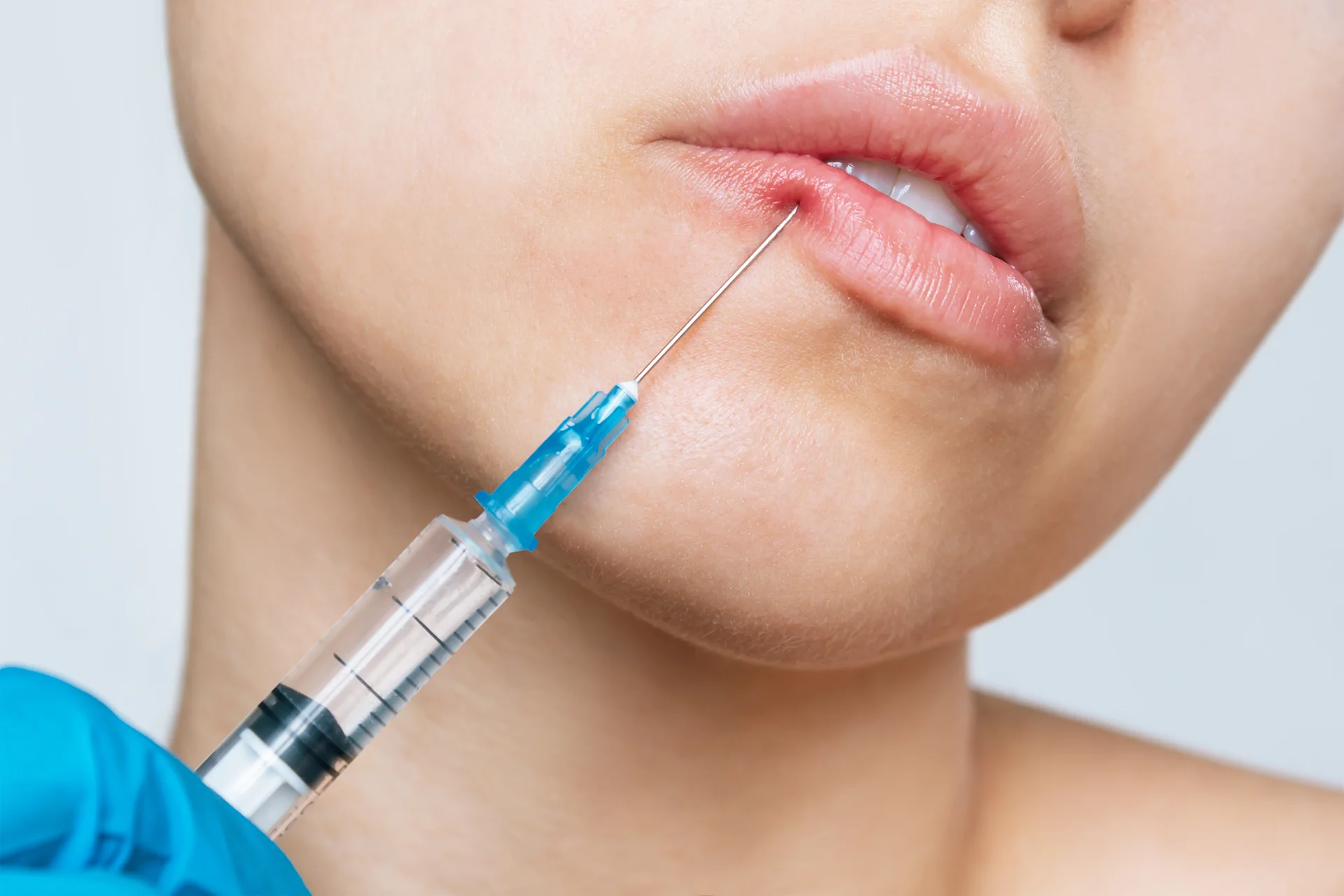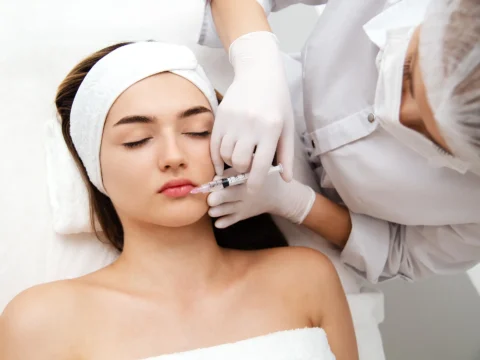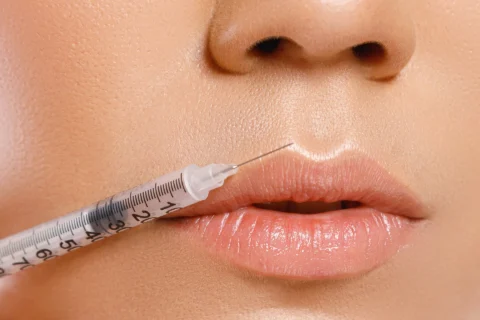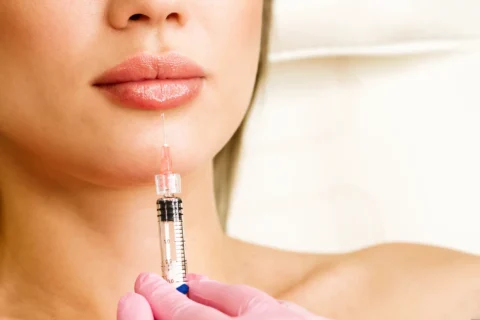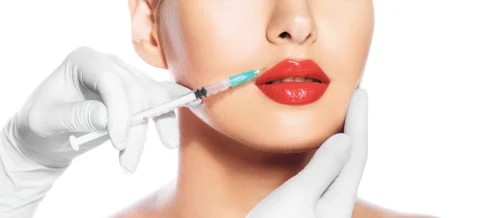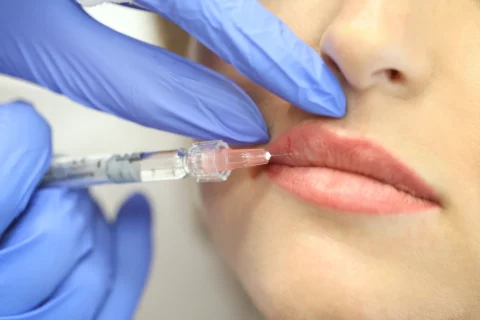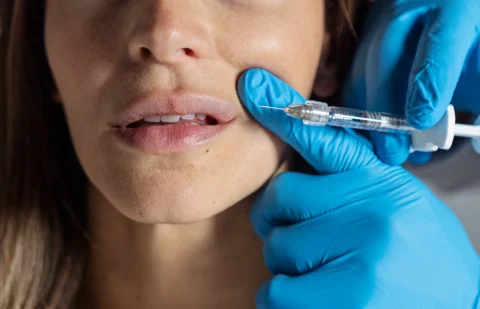Preventing Vascular Issues in Lip Filler Procedures
Lip injections are usually safe, but there can still be complications, even with experienced professionals.
One of the most serious risks is accidentally injecting the dermal filler into a blood vessel. What happens when filler enters the vascular system, and how dangerous is it?
Let’s look at the consequences, symptoms, and treatments for this rare but potentially serious complication.
The Immediate Dangers of Lip Filler Complications in Blood Vessels
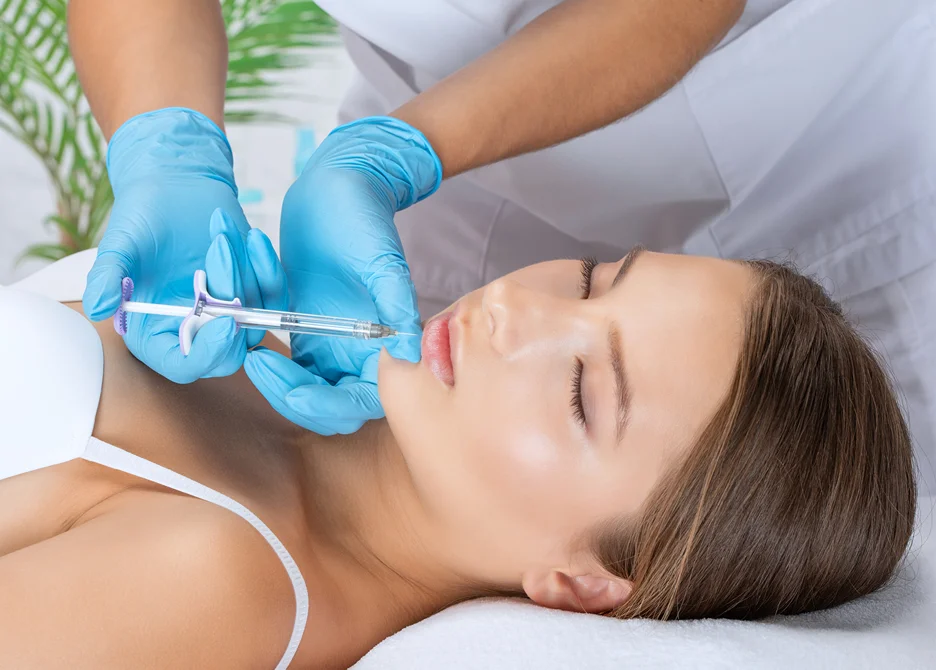
When lip filler is inadvertently injected into a blood vessel, it can trigger a series of urgent and concerning reactions:
- Intense Pain at the Injection Site: The most immediate and common symptom is severe pain. This occurs as the filler material enters the blood vessel and begins to spread.
- Rapid Swelling of the Lips: Significant swelling can develop within minutes on the side where the injection was made. This is due to the filler material expanding within the blood vessels.
- Bruising and Discoloration: The affected area may exhibit dark, blotchy bruises and a bluish discoloration of the skin. This is caused by blood accumulating under the skin’s surface as a result of damage and leakage from the compromised blood vessels.
- Uneven Lip Texture: The lips may appear uneven and lumpy due to the filler material clustering within the vascular system.
- Tissue Ischemia: The most critical consequence is tissue ischemia, where vascular occlusion hinders proper blood flow to the lips and surrounding skin. This deprivation of oxygen and nutrients can lead to cell and tissue death if not addressed promptly.
Pain, swelling, and bruising are common after lip injections, but the suddenness and severity of these symptoms may indicate a vascular complication, requiring immediate medical attention.
Why Is Injection of Dermal Fillers into a Blood Vessel Considered an Emergency?
An accidental injection of filler into a blood vessel is a critical medical emergency due to the severe risks and potential for permanent damage. Immediate medical intervention is essential to prevent lasting harm.
Vascular Occlusion
When filler material obstructs small blood vessels, it disrupts the normal blood flow to the lips. This blockage, known as vascular occlusion, leads to ischemia, a state where tissues are starved of oxygen.
Prolonged oxygen deprivation results in cell damage and death, potentially causing tissue necrosis. This may result in enduring scarring or disfigurement of the lips, underscoring the critical nature of the situation.
Embolism
Although less common, there’s a risk that the facial filler material might enter the bloodstream and travel to vital organs such as the brain, heart, or lungs. In these locations, it can cause an embolism—a blockage that may trigger life-threatening conditions like a stroke or heart attack.
Blindness
Lip fillers, though rarely, can cause blindness when injected into the superior labial artery. This risk stems from the artery’s connection to the orbital blood supply, including the retinal artery. The superior labial artery is located superficially at the wet-dry mucosal junction of the upper lip, a common site for injections.
The critical nature of these risks underscores the necessity of promptly dissolving the injected filler and restoring proper blood flow. Delaying treatment increases the risk of severe, irreversible damage to the lips, face, and even systemic health.
Get the lips you’ve always wanted with the peace of mind you deserve. Trust Dr. Hardik Soni at Ethos Aesthetics + Wellness in New Jersey for lip fillers with a safety-first approach.
Safely Dissolving Dermal Filler and Restoring Blood Flow After Vascular Complications
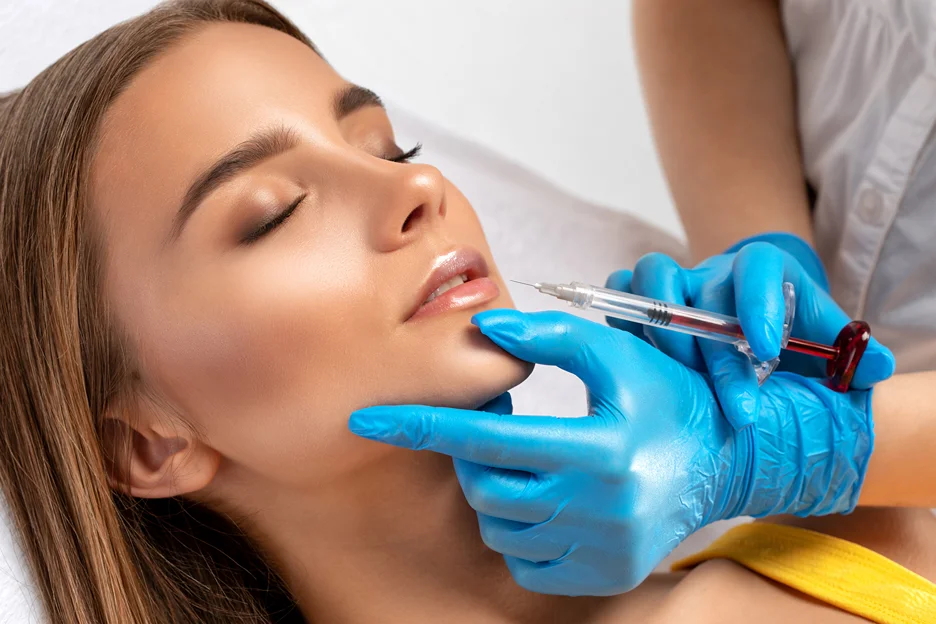
In the event of a vascular complication during lip filler injections, immediate action is crucial to restore proper circulation. Your provider will typically follow these steps:
Assessment
The first step involves a careful examination of the lips to identify signs of occlusion. This includes comparing the affected side with the unaffected one to detect any asymmetries.
Using Hyaluronidase
This enzyme is injected to rapidly break down the filler material. Multiple doses might be necessary to fully dissolve any occlusions.
Continued Care
The area is treated with warm compresses and massage, and circulation is closely monitored for several hours. Topical nitroglycerin may also be used to improve blood flow.
Medication and Surgical Interventions
Oral medications are often prescribed to combat ischemia, alleviate swelling, and avert tissue death.
Additionally, if the filler is not composed of hyaluronic acid (HA) or if hyaluronidase (the enzyme used to dissolve HA fillers) proves ineffective, surgical intervention may become necessary.
This surgical approach is aimed at removing the filler material and restoring normal blood flow, thereby preventing further damage.
Follow-Up Examinations
Regular check-ups in the following week are essential to ensure that the swelling subsides and there are no permanent scars or deformities.
Seek emergency care immediately if vascular occlusion is suspected. Restoring blood flow swiftly, ideally within 1-2 hours, is key to preventing lasting damage. Even a day’s delay can result in irreversible consequences.
With timely and appropriate intervention, most cases without tissue death can resolve completely as the filler naturally dissipates. However, severe cases can lead to permanent damage, underscoring the importance of prompt action.
How Can Blood Vessel Complications with Lip Fillers Be Prevented?

Choosing the Right Injector
- Expertise in Lip Augmentation: Opt for a provider with specialized experience in lip fillers. Their adeptness in avoiding blood vessels is crucial.
- Credentials and Portfolio: Confirm their qualifications and ask for patient before-and-after photos.
- Emergency Preparedness: Ensure the presence of a doctor on-site and avoid informal settings like “injection parties.”
Injection Techniques for Safety
- Controlled Injection: Use small, slow filler injections to minimize risks.
- Blunt-tip Cannulas vs. Sharp Needles: Prefer cannulas to reduce tissue trauma and the likelihood of puncturing blood vessels.
- Aspiration Technique: Employ aspiration before injecting to check for blood, indicating vessel penetration.
- Small Aliquots: Inject filler in small amounts, threading it carefully for enhanced safety.
Pre-Treatment Precautions
- Avoid Risky Substances: Refrain from alcohol, certain drugs, and blood thinners for 1-2 weeks prior.
- Ice Application: Use ice to constrict blood vessels, reducing puncture risks.
- Hydration: Arrive well hydrated to improve the safety of injections.
Communication During Procedure
- Immediate Feedback: Inform the provider about any pain or asymmetry during the procedure, as these can be signs of vascular trauma.
Planning for Emergencies
- Availability of Hyaluronidase: Confirm that the clinic has hyaluronidase ready for immediate use in case of occlusion.
- Awareness of Complication Signs: Understand the symptoms of vascular complications to seek timely care.
- Post-Treatment Follow-Up: Schedule a check-up within 1-2 days post-treatment to ensure proper healing.
Additional Safety Measures
- Regular Training Updates: Ensure your provider stays updated with the latest safety protocols and techniques.
- Patient Medical History Review: A thorough review of your medical history can help identify potential risks.
- Post-Treatment Care Instructions: Receive clear guidance on caring for the treated area after the procedure.
By combining informed choices, careful techniques, and clear communication between a knowledgeable patient and a skilled injector, most complications, like accidental filler injection into blood vessels, can be averted. An immediate response to any symptoms is vital for the best outcomes.
Frequently Asked Questions About Lip Filler Complications
What Happens if a Blood Vessel is Hit During Filler Injection?
When filler material accidentally enters a blood vessel during injection, it can lead to vascular occlusion. This blockage prevents oxygen and nutrients from reaching the tissue, potentially causing severe complications like skin necrosis, where tissue death occurs due to a lack of blood flow.
Can Lip Fillers Cause a Heart Attack?
Though extremely rare, there’s a small risk that vascular occlusion caused by dermal fillers could lead to blood clot formation. If such a clot travels to the heart, it could potentially trigger a heart attack. This scenario is more likely if the filler is injected directly into a blood vessel.
How Much Bruising is Normal After Lip Fillers?
Bruising is a common side effect, with about 67% of patients experiencing it to some degree. The extent and duration can vary, ranging from mild, short-lived bruising to more pronounced bruising lasting several weeks.
Can Lip Fillers Cause Blood Clots?
Yes, injecting filler into a blood vessel can lead to a blockage, potentially causing a blood clot. This rare but serious complication, known as vascular occlusion, can have significant health consequences if the clot travels to other body parts.
What Causes White Spots or Discoloration After Filler Injections?
White spots or discoloration post-injection can indicate blanching, caused by interrupted blood supply to the skin. This may occur if the filler is injected too superficially or blocks a blood vessel, leading to pale or reddish skin tones.
What Should I Do if I Notice White Spots or Discoloration After Dermal Filler Injections?
Contact your healthcare provider immediately if you notice white spots or discoloration. These symptoms could signify a vascular occlusion, requiring urgent medical attention.
Can White Spots or Discoloration After Filler Injections Be Permanent?
Typically, these spots or discolorations are temporary and resolve once the filler dissipates. However, permanent skin damage can occur in rare cases of vascular occlusion.
Get on your lip filler journey with the expert care of Dr. Hardik Soni at Ethos Aesthetics + Wellness in New Jersey – your partner in achieving beautiful results without compromising safety.

